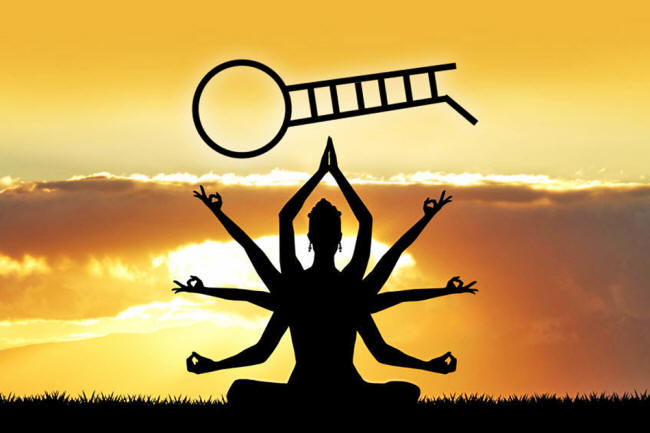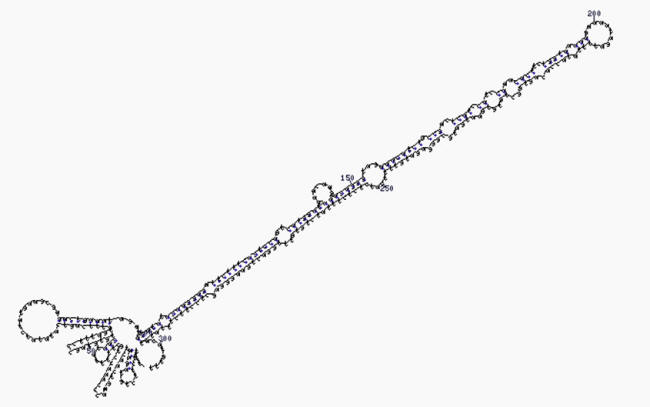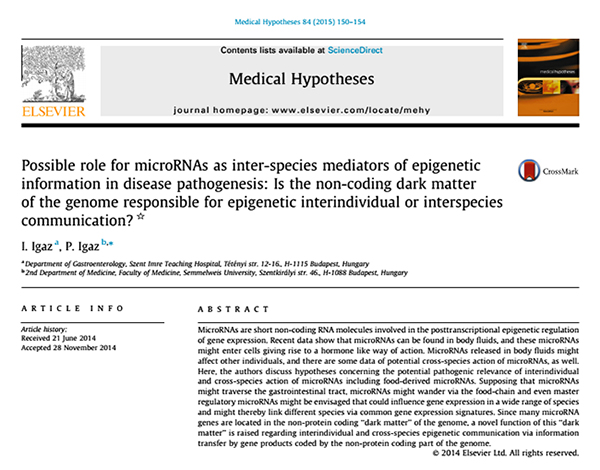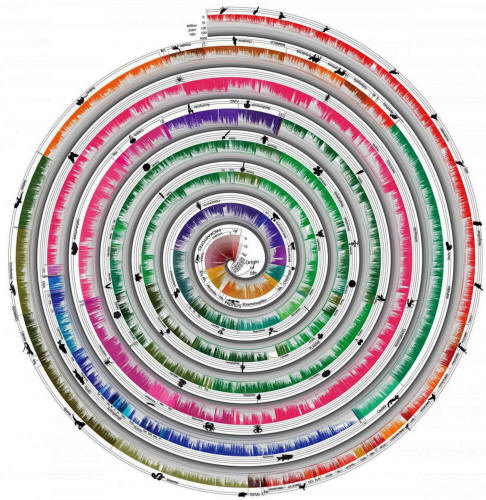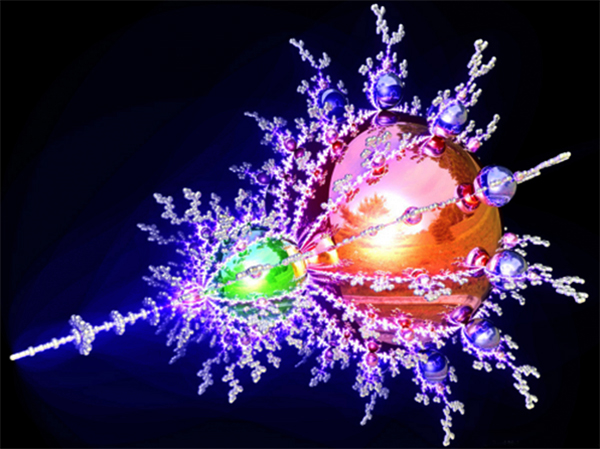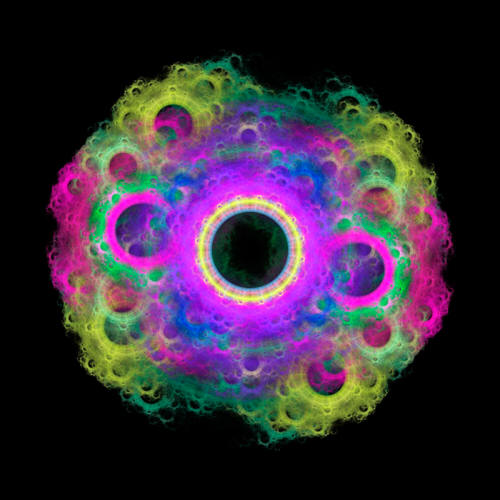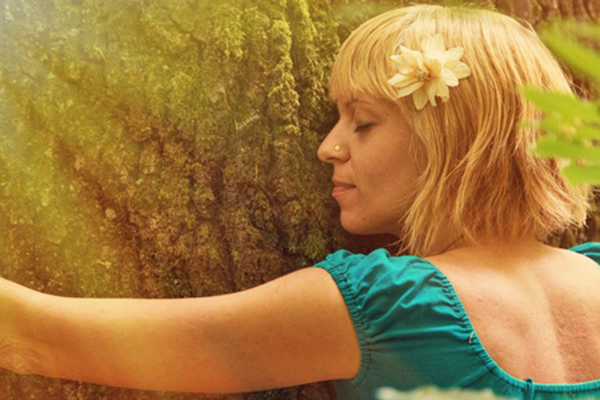|
In the post-Genomic, a revolution is afoot, but it will be felt first before it is fully known by the intellect.
without troubling a star." Francis Thompson
One kind of non-coding
RNA identified in the study known as microRNA is believed capable of
acting as a master regulator of gene expression across kingdoms.
If MicroRNAs indeed function as cross-kingdom master regulators of the divers members of the biosphere, every living thing is therefore inseparably connected via interpenetrating webs of genetic and epigenetic relationships.
This perspective
radically diverges from classical evolutionary theory where
organisms are viewed externally related to one another, with
self-preservation and survival - not co-operation - as primary
instinct.
Unlike the conventional model, where the DNA is hermetically sealed off within the lockbox of each species, evolving in isolation at a glacial pace, except for extremely rare horizontal gene transfer events (such as retroviral vectors that incorporate into the germline and become endogenized as endogenous retroviruses), the newer, more "open access" model would permit species to alter and affect another's phenotype in real-time, along with potentially altering its long-term evolutionary trajectory by affecting epigenetic inheritance patterns.
This speaks to a
co-evolutionary and co-operative model, with all areas of the tree
of life, co-developing in a highly complex and seemingly highly
intelligent, carefully orchestrated manner.
introduced by Temple university researchers
in 2015
The Post-Genomic Era,
and the "Open Access" Genetic Infrastructure of Life
Previously labeled "junk DNA," it has been estimated that 70-90% of the transcriptome are information-containing and gene-modulating molecules known as non-coding RNAs ("software").
Non-coding RNAs, such as microRNAs are known to regulate the expression of the majority of protein-coding genes in the human genome, primarily through their gene-silencing properties.
And so, the discovery of the potentially primary role of RNAs in gene expression adds a much needed layer of complexity to help explain the miracle of the human body, and life in general.
Ultimately, I believe, the discovery reveals the genetic infrastructure of the myriad species on the tree of life is actually far more "open access," and therefore both resilient/changeable and fragile, than ever before imagined.
In other words, non-coding RNAs make possible a horizontal process of,
...in a relatively free manner, and in real time versus glacial time.
And as a result, species, across all kingdoms, are integrated into a web-like interdependence and co-evolutionary collaboration that was hitherto considered, from the perspective of molecular biology, genetics, and orthodox evolutionary biology, impossible...
The genetic make-up of plants and animals, for instance, was believed locked away within the hermetically sealed off nucleus of the cell, with the only theorized direction of information flowing from the inside out:
Also, it was believed that the primary mechanistic impulse of the genetic element of life was to selfishly reproduce.
The
Gaia principle, therefore, seemed precluded by the
inherent
selfishness of genes.
And then the central dogma of molecular biology, as faith-based and pervasive as that of any religion (maybe more so), collapsed with the completion of the human genome project (2003)!
There were not even enough protein-coding genes to account for the about 100k different proteins found in the human body.
Clearly, we had to look to factors beyond these protein-coding genes to explain even the existence and functions of the human body.
This launched the explosion of interest in epigenetics, followed quickly by the microbiome, which was an event horizon we passed through at the turn of the third millennium.
Most of us have no idea
has even occurred but is truly Copernican in implication (watch
presentation at the Functional Forum in Boulder on this, below):
So, in the post-Genomic era, it is starting to look like the 'dark matter' of the human genome is eclipsing in importance the known, protein-coding sequences, which account for only about 1.5% of the DNA's 3 billion base pairs.
Why? Because it has been recently discovered that most of our genome (estimated 70-90%) is transcribed into non-coding RNAs.
And why would this be so, if not for a purpose? Life does not concern itself with producing anything without reason.
The new paper suggests this as a possible answer:
When it comes to the protein-coding DNA, they are capable of modulating the majority of their expression, mainly through epigenetic gene silencing.
They are, then, in theory master regulatory molecules. Not only that, microRNAs can travel between cell types within the body (soma to germline), but between species.
And this is where Lovelock's hypothesis may receive some vindication:
The last point is important.
The Gaia hypothesis needs more than microRNAs to make sense. And, in fact, a good amount of compelling research exists pointing to microbial life as the primary mechanism through which the Earth self-regulates
Tug on one thread, and every other in the universe moves, or is affected.
Such interdependence is the death of the ego, or the hubris of,
We have here a rudimentary ontologically based ethics.
Which is to say, instead of thinking "right" and "wrong" exists merely in the realm of subjective valuations, ego judgments, the realm of the mind that is projected onto matter.
We are compelled to expand our appreciation of a natural order of things.
An intelligence? A compassion?
Compassion, of course, means to "suffer with." We suffer with one another, in this RNA-mediated universe of epigenetic interdependence. We also rejoice, together, if as has been determined from thousands if not millions of years of co-evolutionary collaboration we abide by the natural patterns/laws that imbue fitness, health, and ecological synergy and balance.
These "moral laws," of "cause and effect" (karma), are inherent in the image of the Goddess.
It is fundamentally her meaning. And when Lovelock invoked Gaia, this was because only the mysterious can explain or approximate the miraculous, which is life itself. This paper is important.
But it is just a glimpse of what is to
come, or already here. There is so much more!
Science Validates
Mythos
Science is not only
discovering, but actively fomenting an appreciation for the
universal laws of life, once encapsulated so poetically, but now via
the optic of science, in the symbol of the goddess.
Possibility has eclipsed necessity...
Science's ego has been so
badly damaged, following the death of its basic ideological precepts
and a prior beliefs, that it has been slapped back into its proper
definition as a methodology, and not a belief system, a religion
(Scientism), or a biopolitical construct designed for control of the
population.
This ancient yet literal symbol of a once universal perceptual framework and ethos, which spanned the planet from Iberia to Siberia (as demonstrated by the pre-Neolithic archeological record of surviving artifacts, which universally referenced the Goddess), reappears today in the phenomena of uniparental inheritance.
The discovery of a Mitochondrial Eve, for instance, or that the mother of our species passes down, starting in utero, the vast majority of the microbiome to the offspring, is no small change in perspective.
If ONLY women pass down the mitochondrial genetic material in our cells conventional biologists believe account for the majority of the cell's energy needs, clearly her role is dominant over the male's spermatozoa-limited contributions.
Read more about this
remarkable transition in article: "How the Microbiome Destroyed the Ego, Vaccine Policy and
Patriarchy."
We see the reversals now. The power grabs and tripping. A corrective perception of the natural order of things is regaining appreciation.
If we are holobiont species, and the microbial component of that equation
eclipses and outnumbers the genetic contribution of the human genome
by 200 fold (4.5 million genes contributed by the microbial verses
23,000 genes contributed by the human (and orders of magnitude more
non-coding RNA by these microbes!), the female's role in the
equation has profound, dominant, asymmetrical importance.
To insult the earth with a biocide (e.g. Roundup/2,4 D) is to harm the self...
All things are connected...
The moral law emerges again through the optic of science, but speaks
to a wisdom that is experienced bodily, viscerally, as a certainty
of knowing.
I mean, for us, living on this miraculous blue marble in infinite space, it is clearly apparent that the clumsy machinery of selfish genes clamoring for dominance against one another could not have lead to the obviously highly organized, symbiotic, and even seemingly goal-oriented results of billions of years of evolution.
But, as the story goes,
science (as a belief system; scientism) only acknowledges what it
has decided it can prove as real.
And what bespeaks the natural order better than biology, and the natural relationship and order between things?
For instance, our bodies have an evolutionary imperative to secrete certain proteins to attract certain bacteria, who in turn, have an evolutionary imperative to commensally inhabit us. If this natural order is disrupted via faux foods, anthropogenic radionuclides, or chemical exposures, for instance, this is an onto-ethical violation, which results in a natural consequence (cause-effect; karma).
And so, moral law is embedded in the things themselves and not an externality. Decision, however, is a sort of "externality."
Choice is that magic
world-creating or destroying ingredient. The choice, also, not to
choose - this is as real, as far as the onto-ethics, as choosing. An
onto-ethics brings "activism" into its proper sphere of
understanding, as a natural response to threats to the natural
order.
Life, the miracle, never lends itself well to objectification.
The Logos when applied to Bios, became a discipline (bio-ology) to systematically deconstruct the whole - the miracle - into its parts, killing it at the very same time.
What was left? A dead thing, whose life principle, it was believed, was sacrificed (often literally via vivisection) in order to extract and abstract "knowledge."
But the finger pointing at the moon will never BE the moon.
The fully completed
genome of a species, ours or a yeast, is not equivalent to its true
meaning, value, or
ontological status (i.e. reality). This has been
the illusion that has permeated the entire enterprise of science.
|


